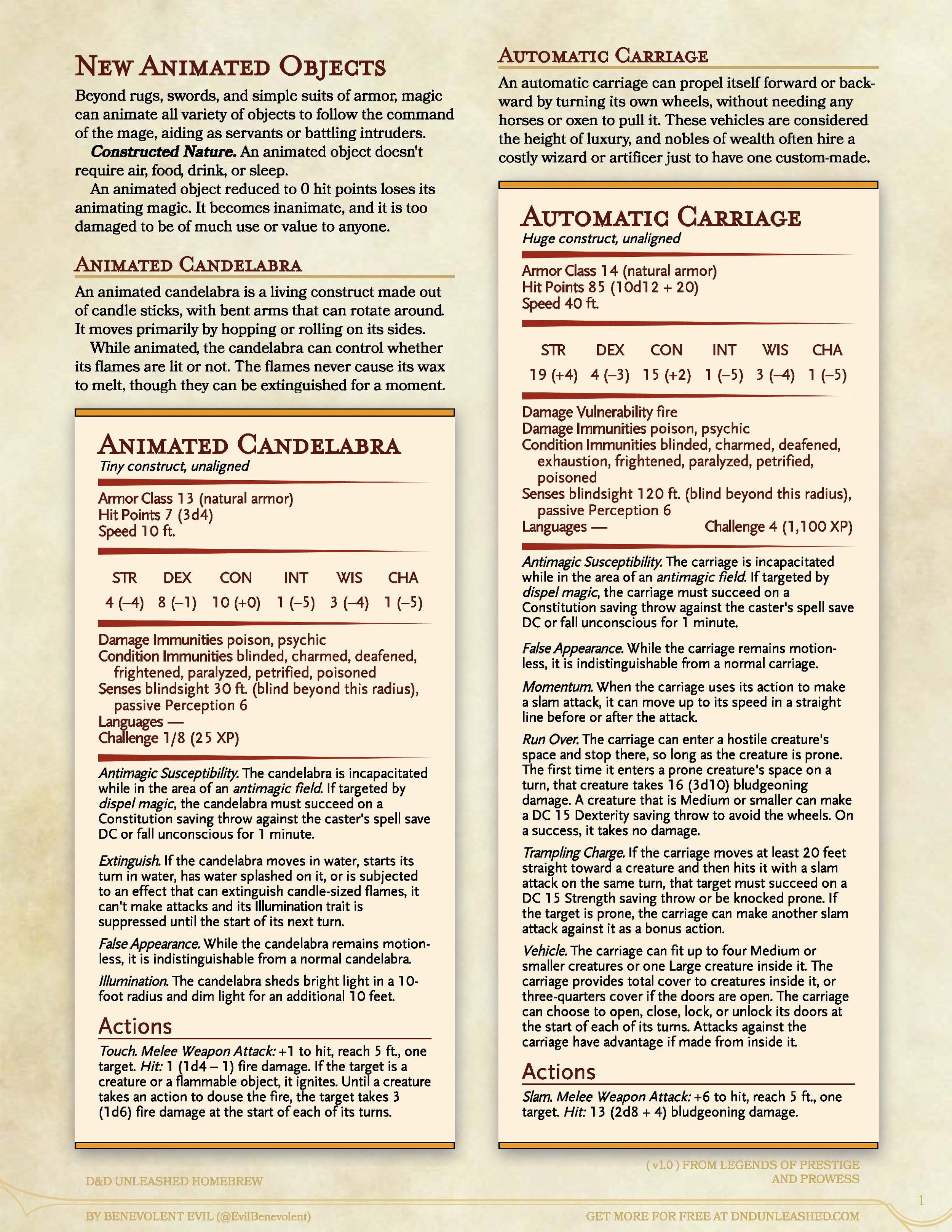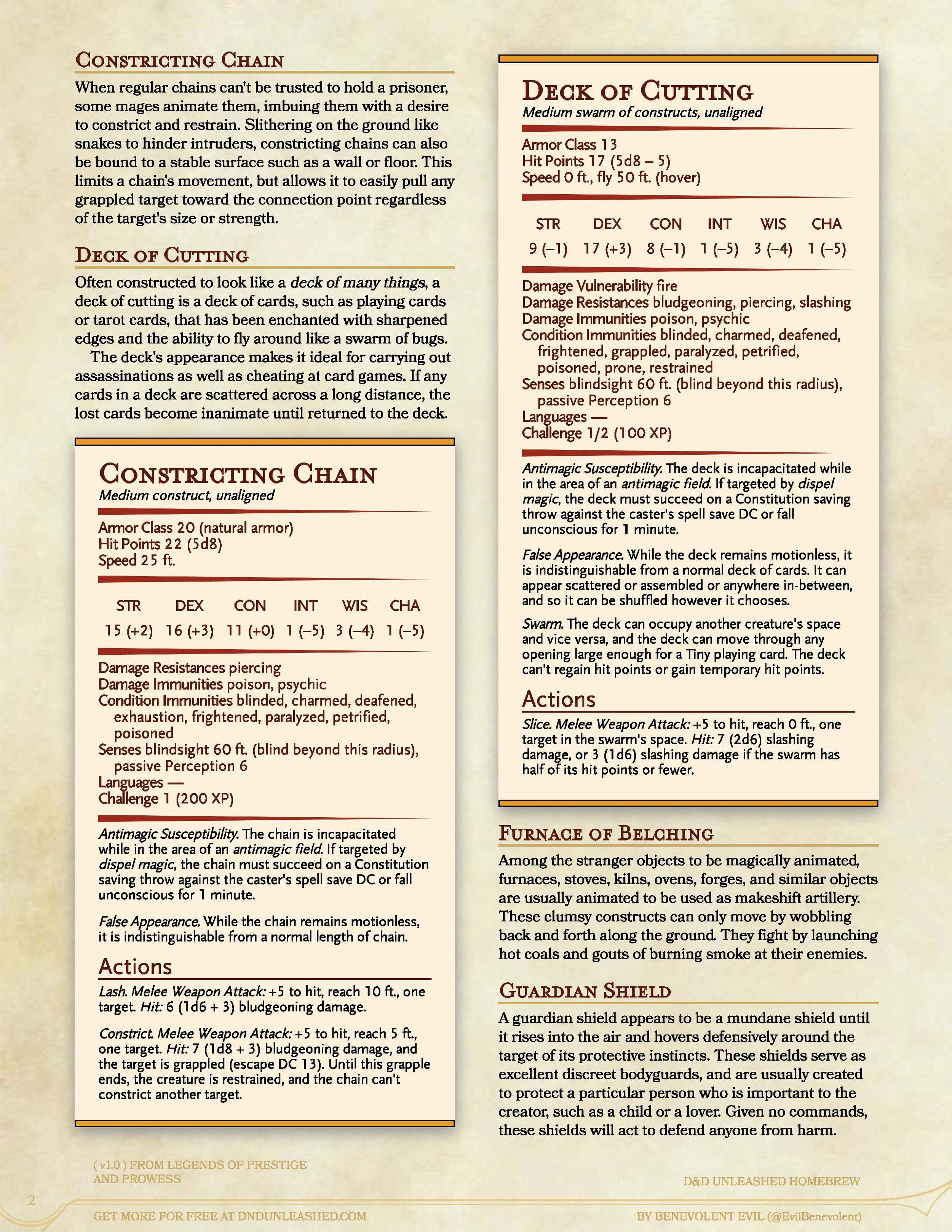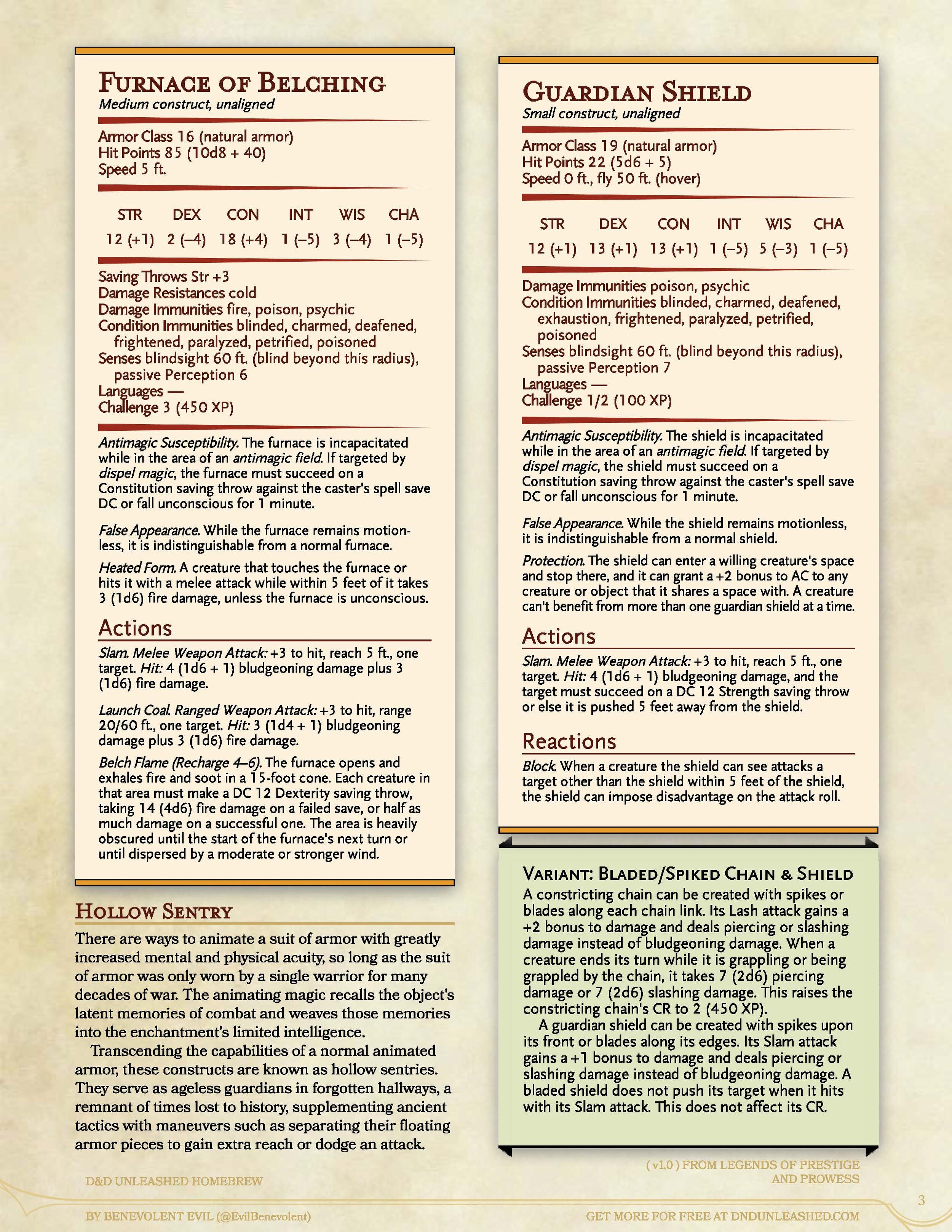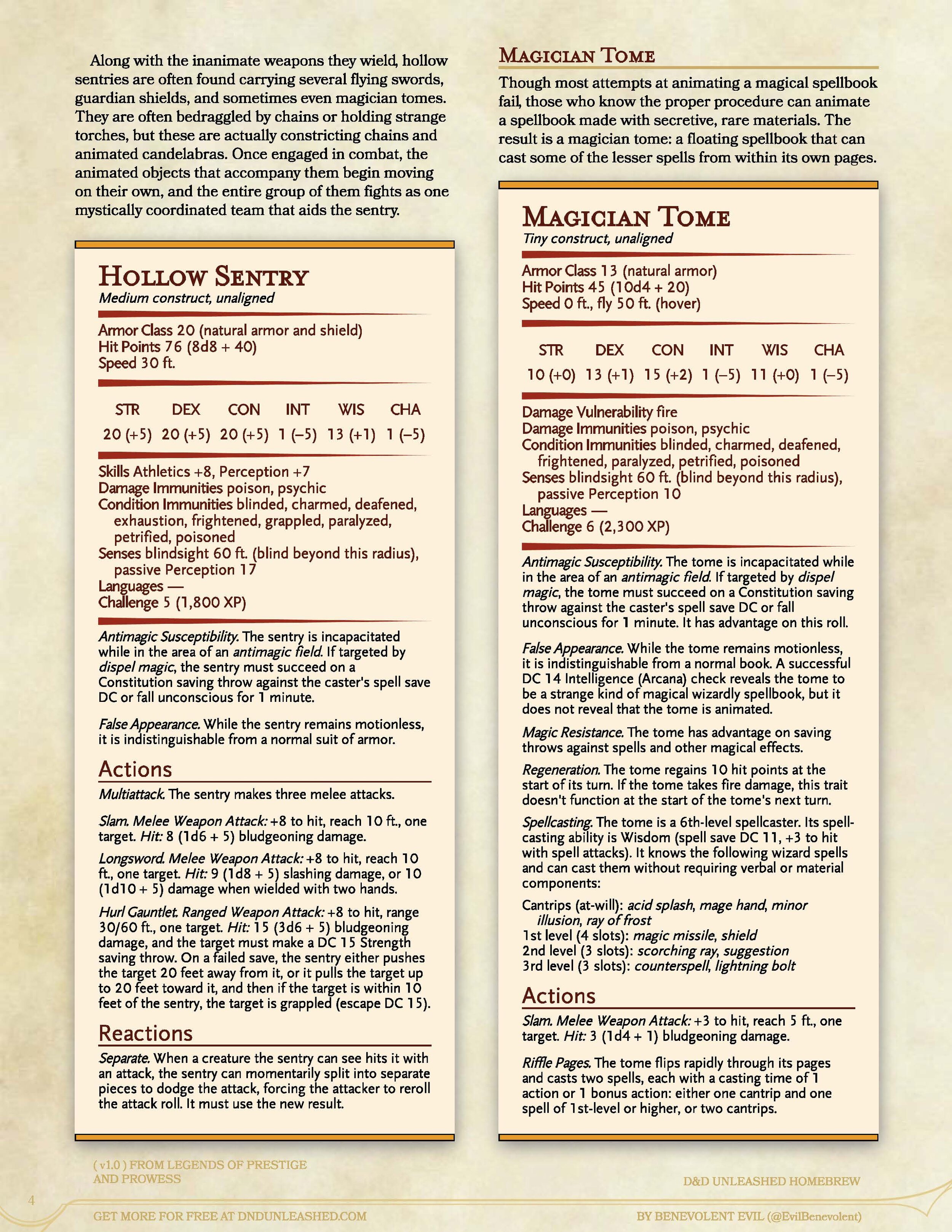New Monsters: Animated Objects
PDF Link | D&D Beyond Links: Animated Candelabra, Automatic Carriage, Constricting Chain, Deck of Cutting, Furnace of Belching, Guardian Shield, Hollow Sentry, Magician Tome




Animated objects are a classic mainstay of fantasy fiction, from animated broomsticks and singing candelabras to dancing swords and empty suits of armor. Whether they are intended for servitude or for combat, they are usually created by a mage of some kind, though some are created unintentionally in magical accidents or mysterious curses. The Monster Manual describes a few basic objects that have special effects once they become animated — animated armors, dancing swords, and rugs of smothering — but a variety of other objects have strange attributes and attacks available to them once animated. For the other animated objects, D&D Unleashed has you covered with these eight new monsters!
Animated candelabras can’t move very quickly, but they carry the important threat of lighting an enemy on fire (if they aren’t snuffed out by their enemies or the environment first). Even at higher levels, a few of these wobbly candle-holders can make an interesting addition to an encounter by making players choose between putting out flames, putting up with the constant damage, or focusing on the teensy candelabras first. The automatic carriage also pairs well with other monsters, such as wealthy or powerful humanoid NPCs that might be riding in the carriage. An assassin or a mage riding in one of these carriages under their command makes for a memorable and challenging urban encounter for mid-level characters. You can reuse these statistics in a variety of ways — the candelabras can be used to represent animated torches or lanterns, and the carriages can be flavored as animated plows or even steam engines that explode when subjected to flame.
Constricting chains fit right in with the décor of most abandoned dungeons, and their ability to restrain their targets makes them pair well with the grisly traps that litter such dungeons. Some of these chains are even set into the walls, floors, and ceilings, allowing them to pull victims into the path of things like sawblades, falling logs, or good old-fashioned spike traps. They can assist other animated objects in combat that have slower speeds by keeping enemies close enough to attack, such as with the short-ranged coal attacks made by a furnace of belching. Some are actually ovens, kilns, forges, or other searing-hot appliances, but all are extremely tough, extremely heavy, and barely capable of personal movement by waddling (and making a loud clanging noise as they do).
Be careful not to combine the burning candelabras and furnaces with easily-burned objects, such as those filling a library. For wizards looking to defend their book collections, a magician tome is uniquely capable among animated objects, offering magical defenses as well as decent surveillance. These demi-wizards are capable of limited spellcasting, which they rapid-fire by flipping from page to page in rapid succession, flying above the heads of intruders and out of reach of melee attacks. Just like the inanimate books they resemble, magician tomes are quite vulnerable to fire. So is the versatile deck of cutting, a deck of cards animated to fly as a swarm of nearly-independent cards. Easier to disguise than a sword or dagger and more durable than both, these razor-sharp cards blend in easily with almost any urban environment. Because they can be physically configured in so many ways, whether scattered on the ground, revealing a particular card, or shuffled in a specific order, these decks are great for tricking foes or cheating at games. They can even cut in multiple ways. If you’re looking to really surprise your players, try using the deck’s statistics for a collection of paper, such as the pages of a book! In a library filled with animated books, which are the spellcasters and which are simply the hiding place for swarms of slicing parchment?
But many animated objects are created to act as trusted emotionless bodyguards, such as guardian shields. These shields are similar to flying swords on a surface level, but they also have traits based on the effects of wearing a shield and the shield-based Protection fighting style. They can even push enemies when they attack, an ability that is translated from the Shield Master feat, enabling them to more easily keep threats away from the target of their protection. Carrying one or two of these shields with you can save your life, especially if the shield is enchanted to follow your simple commands. You can often find them paired with a flying sword, the two of them being carried by a hollow sentry. These animated suits of armor are something between an animated armor and a helmed horror in design. The sentry is a suit of animated armor with the skills and cunning of an experienced warrior along with extreme strength, dexterity, and constitution. The magic holding these sentries together is so strong that they can split their constituent parts at-will to dodge attacks or lengthen their reach, enabling them to fight in ways that a mortal warrior never could. They serve excellently as higher-level shock troops for a magical army where the traits of a helmed horror might be too much, martial bodyguard constructs that remain smaller and more easily disguised than a proper shield guardian, and of course sentinels of ancient tombs, wielding and guarding magic items, more capable as a boss or mini-boss than a normal animated armor.
Put altogether, you have nearly a dozen objects to choose from between those in the Monster Manual and these, which you’ll also be able to find in Legends of Prestige and Prowess when it releases. It’s a great example of the breadth added to your game when you add D&D Unleashed homebrew. Just don’t ask us to animate your dice!
PDF Link | D&D Beyond Links: Animated Candelabra, Automatic Carriage, Constricting Chain, Deck of Cutting, Furnace of Belching, Guardian Shield, Hollow Sentry, Magician Tome








